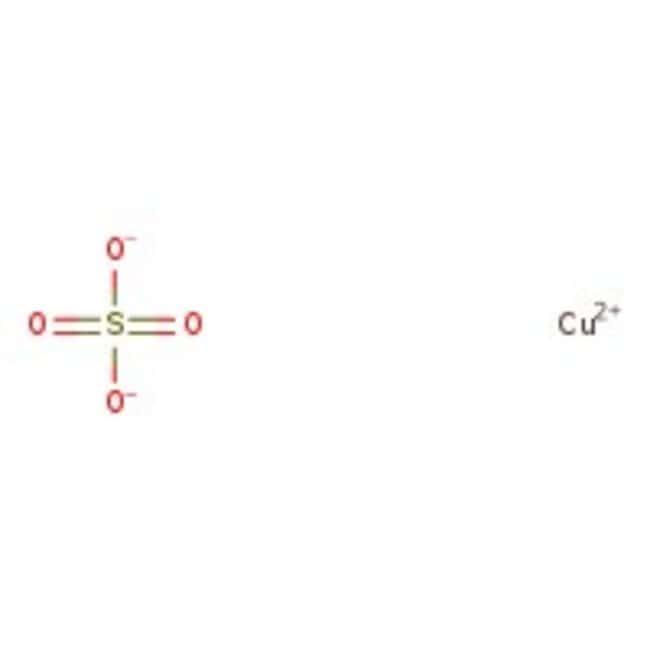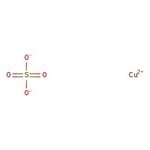Search Thermo Fisher Scientific
Sulfate de cuivre(II), anhydre, 98 %, Thermo Scientific Chemicals



Sulfate de cuivre(II), anhydre, 98 %, Thermo Scientific Chemicals
Identifiants chimiques
Spécifications
Description
This Thermo Scientific Chemicals brand product was originally part of the Alfa Aesar product portfolio. Some documentation and label information may refer to the legacy brand. The original Alfa Aesar product / item code or SKU reference has not changed as a part of the brand transition to Thermo Scientific Chemicals.
Le sulfate de cuivre(II) est utilisé pour la galvanoplastie et dans l’industrie minière. Il agit comme agent déshydratant pour former et manipuler des groupes acétaux. En chimie analytique, il est utilisé dans la solution de Fehling′ et la solution de Benedict′ pour mettre en évidence la présence de sucres réducteurs dans une solution. Également utilisé pour déterminer la présence de protéines dans le test du biuret.
Solubilité
Soluble dans l’eau et le méthanol. Insoluble dans l’éthanol.
Remarques
Incompatible avec les bases fortes, les métaux, les métaux alcalins et les métaux en poudre.
Figures
Documentation et téléchargements
Certificats
Foire aux questions (FAQ)
Citations et références
Sécurité et manipulation
Classification of the substance or mixture
CLP classification - Regulation(EC) No 1272/2008
Label Elements
Signal Word
Warning
Hazard Statements
H302 - Harmful if swallowed
H315 - Causes skin irritation
H319 - Causes serious eye irritation
H410 - Very toxic to aquatic life with long lasting effects
Precautionary Statements
P273 - Avoid release to the environment
P301 + P312 - IF SWALLOWED: Call a POISON CENTER or doctor/physician if you feel unwell
P305 + P351 + P338 - IF IN EYES: Rinse cautiously with water for several minutes. Remove contact lenses, if present and easy to do. Continue rinsing
P280 - Wear protective gloves/protective clothing/eye protection/face protection
P302 + P352 - IF ON SKIN: Wash with plenty of soap and water